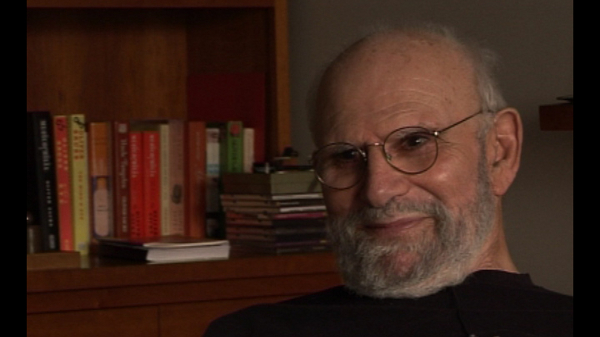NEXT STORY

Recognition of Jerome Bruner's work
RELATED STORIES

NEXT STORY

Recognition of Jerome Bruner's work
RELATED STORIES


|
Views | Duration | |
|---|---|---|---|
| 281. I miss my dear friend, Thom Gunn | 280 | 00:53 | |
| 282. Jerome Bruner, the 'Cognitive Revolution' and behaviourism | 441 | 02:58 | |
| 283. Jerome Bruner's expansive mind | 207 | 01:23 | |
| 284. Jerome Bruner: one of many implicit mentors | 192 | 00:37 | |
| 285. Jerome Bruner's physical strength | 198 | 00:44 | |
| 286. Jerome Bruner, born with cataracts | 181 | 00:26 | |
| 287. How could Jerome Bruner see ultraviolet light? | 220 | 01:56 | |
| 288. Recognition of Jerome Bruner's work | 184 | 00:33 | |
| 289. Meeting F Robert Rodman at UCLA | 189 | 01:37 | |
| 290. Distance couldn't spoil my friendship with F Robert Rodman | 172 | 01:07 |


Normally we can’t see anything beyond violet in the spectrum, but this is partly because our lenses cut out shorter wavelengths. There is in fact some retinal sensitivity beyond the violet, but you have to lose your lenses to see that. Now... nowadays when one has cataract surgery, you have an implanted lens, the implanted lens is made... is given the same cut-off as the natural lens. But of course, Jerry never had that, and he once told me that he could see some way into the ultraviolet, and in particular, that he could see the honey guides on flowers which guide bees to the nectar. And so I said, 'What’s... what's ultraviolet like?' And he said, 'I can no more tell you... I can no more convey it to you than you can tell me what stereoscopy is like'. Jerry has no stereoscopy. And this brought home the fact, well, it brought home what Bertrand Russell often talked about when he contrasted knowledge by description with knowledge by acquaintance. There is no way you can know what it is like to see ultraviolet if... if you don’t see it, no way in which you know what it’s like to see stereoptically. And this is something I think I’m going to enlarge on when I speak of... of Stereo Sue and... and my own loss of stereoscopy.
Oliver Sacks (1933-2015) was born in England. Having obtained his medical degree at Oxford University, he moved to the USA. There he worked as a consultant neurologist at Beth Abraham Hospital where in 1966, he encountered a group of survivors of the global sleepy sickness of 1916-1927. Sacks treated these patients with the then-experimental drug L-Dopa producing astounding results which he described in his book Awakenings. Further cases of neurological disorders were described by Sacks with exceptional sympathy in another major book entitled The Man Who Mistook His Wife For A Hat which became an instant best seller on its publication in 1985. His other books drew on his rich experiences as a neurologist gleaned over almost five decades of professional practice. Sacks's work was recognized by prestigious institutions which awarded him numerous honours and prizes. These included the Lewis Thomas Prize given by Rockefeller University, which recognizes the scientist as poet. He was an honorary fellow of both the American Academy of Arts and Letters and the American Academy of Arts and Sciences, and held honorary degrees from many universities, including Oxford, the Karolinska Institute, Georgetown, Bard, Gallaudet, Tufts, and the Catholic University of Peru.
Title: How could Jerome Bruner see ultraviolet light?
Listeners: Kate Edgar
Kate Edgar, previously Managing Editor at the Summit Books division of Simon and Schuster, began working with Oliver Sacks in 1983. She has served as editor and researcher on all of his books, and has been closely involved with various films and adaptations based on his work. As friend, assistant, and collaborator, she has accompanied Dr Sacks on many adventures around the world, clinical and otherwise.
Tags: stereoscopy, Jerome Bruner, Bertrand Russell, Stereo Sue, Susan R Barry
Duration: 1 minute, 56 seconds
Date story recorded: September 2011
Date story went live: 02 October 2012